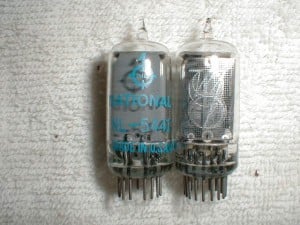Number nine in the Clean Air Technologies Series.

I find it amazing the way technology has evolved so.
I remember being able to walk into the neighborhood electronics parts store with vacuum tubes from home audio entertainment equipment, guitar amplifiers, televisions, radios, and what-not and being able to test their integrity on vacuum tube testers, checking for such things as gas leaks. I also remember my dad owning a stereophonic tuner. It used a vacuum tube to indicate antenna signal strength. The tube had two green-colored bars. The smaller the gap between the bars, the greater the strength of the signal.
I also recall how electronics gear such as audio frequency generators, guitar amplifiers, home audio entertainment equipment, to name just three, that utilized vacuum tube technology also relied on incandescent light bulbs and when lit, this indicated these devices were on.
When I talk about this sort of stuff, I know I’m showing my age. This all takes me back.
About midway through college, meanwhile, I graduated from slide rule use for solving mathematics problems to electronic calculator use. In fact, the first calculator I bought had an “SR” identifier in its model designation which presumably stood for “slide rule.” The readout was a light-emitting diode (LED) display. I believe it was then that I first became familiar with LEDs. Such a display in my view was revolutionary.

I say this because I remember what the forerunner of the LED display consisted of – something called the “Nixie tube.”
And speaking of calculators, computers, like the one I used to create this blog post and others, has its own internal or software-driven calculator feature.
In home, commercial and industrial lighting applications, replacement of incandescent and in some cases fluorescent lamps with more efficient, longer-lasting, more environmentally friendly light-emitting diode lights are gaining widespread acceptance. And in the automotive realm, use of LED lighting is more widespread, no doubt, because of its unique capabilities. Used in traffic signals, this is but one more application where one can find extensive use of LEDs. These have come a long way what with the different types and all.
Being that, comparatively speaking, it takes a relatively small amount of energy to power LED lights, more than likely this is what allows for long operating life. In applications of home, commercial and industrial lighting, for example, the idea is if less energy is required to illuminate LED lights then presumably the demand on the electricity supply is less and if this is the case, a net energy savings results and from this it follows that negative environmental impact from such should also be less, again, comparatively speaking.
The LED definitely has come a long way!
– Alan Kandel
LED lighting has grown immensely and has many applications in various industries today. Impressive development.